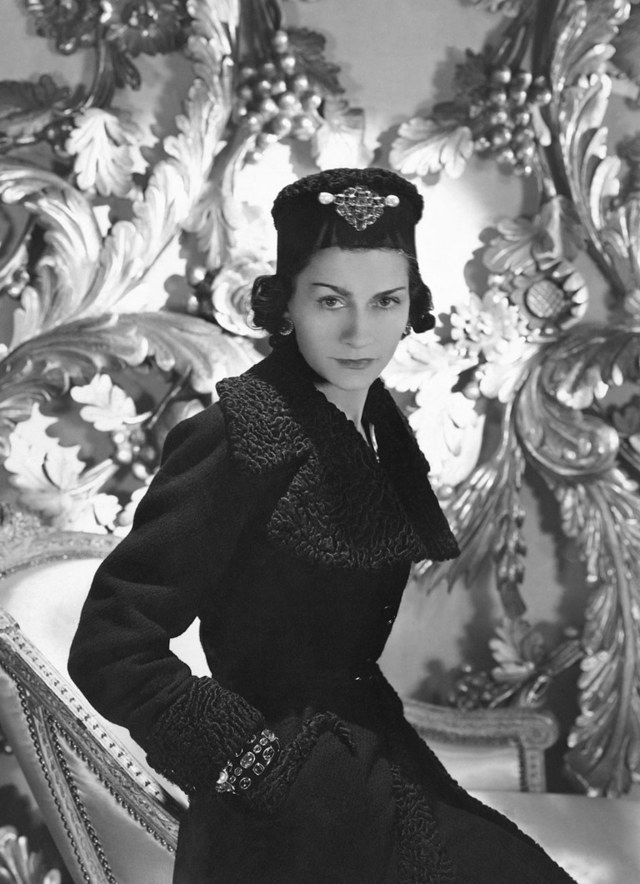
Designers such as Paul Poiret and Fortuny introduced ethnic references into haute couture in the 1900s and early 1910s. Chanel continued this trend with Slav-inspired designs in the early 1920s. The beading and embroidery on her garments at this time was exclusively executed by Kitmir, an embroidery house founded by an exiled Russian aristocrat, the Grand Duchess Maria Pavlovna, who was the sister of Chanel's erstwhile lover, Grand Duke Dmitri Pavlovich. Kitmir's fusion of oriental stitching with stylised folk motifs was highlighted in Chanel's early collections. One 1922 evening dress came with a matching embroidered 'babushka' headscarf. In addition to the headscarf, Chanel clothing from this period featured square-neck, long belted blouses alluding to Russian muzhiks (peasant) attire known as the roubachka. Evening designs were often embroidered with sparkling crystal and black jet embroidery.